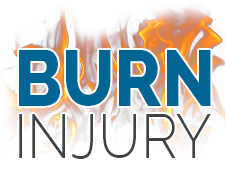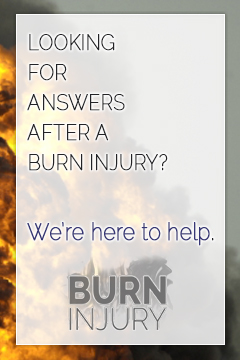Physiotherapy
Physiotherapy, or physical therapy, may be required for patients that have suffered from burns to large areas of the body or to major joints. Burns can cause tightening of the skin, scar tissue, and other changes that may make it difficult to move areas of the body freely. During physiotherapy, doctors can help patients to understand how best to exercise and retain muscle tone while recovering from burns.
Physiotherapy and Burn Recovery
In cases where skin grafts or other surgery is required, doctors will be able to advise patients about the best ways to exercise throughout the process of surgery and recovery. There may be aspects of physical therapy, such as scar massage, that will help ease pain from burns and scarred skin. Physiotherapy is an essential part of recovery for patients that have been severely burned. Patients entering into physiotherapy should be medically stable.
Skin Lubrication
Skin lubrication is very important when the patient is undergoing physiotherapy. The healing or scarred skin can crack if too much strain is put on it from different exercises, lubrication will help keep skin moist and flexible. Physiotherapists will demonstrate to the patient how to lubricate the skin and advise or prescribe certain moisturizers. Lubricating skin will lessen the itchy sensation that accompanies healing burns and prevent complications that may occur from cracked skin.
Compression Therapy
During the healing process for severe burns, excessive collagen fibers often build up and keloids or hypertrophic scars can form. These are raised scars that are made up of the collagen fibers, and can have nerves threaded throughout. Hypertrophic scars will not extend beyond the burn site, but keloids can extend well beyond the burn site and may be itchy or painful. Keloids and hypertrophic scars may limit the range of motion. Compression therapy uses tight bandages that are specially designed for the patient to put pressure on the burn site and prevent keloids and hypertrophic scars from forming.
Splinting
Splinting can help prevent skin contracture, or tightening of the skin around after a burn heals. The splint will keep certain areas of the body from moving while exercising other areas. This can be helpful during rehabilitation exercises.
Scar Massage
Scar massage is the process of gently rubbing a burn scar with lotion or lubricant. Scar massage can help ease pain and may keep scarred areas more pliable and flexible. Scar massage may help to reduce the appearance of scars, although research is inconclusive.
Physiotherapy and Emotional Healing
Physiotherapy can help patients that are recovering from severe burns to heal emotionally, as well as physically. Participation in recovery programs can give patients a sense of empowerment, and help to combat the psychological impacts of suffering from burns and associated scars and limits on mobility. Physiotherapy typically works best when combined with occupational therapy for burn recovery.
Sources:
Hale, Aoife, Rhonda O’Donovan, and et al. “Physiotherapy in the Rehabilitation of Burn Injuries.” Impairment and Disability. University of Limerick, 19 Apr 2013. Web. 29 Dec 2013. <http://www.physio-pedia.com/images/3/30/Burns_and_Plastics.pdf>.
“Occupational and Physical Therapy.” UNC School of Medicine. University of North Carolina at Chapel Hill School of Medicine, n.d. Web. 29 Dec 2013. <https://www.med.unc.edu/burnSince/about-us/services/OT-PT>.
Proctor, Fiona. “Rehabilitation of the Burn Patient.” Indian Journal of Plastic Surgery : Official Publication of the Association of Plastic Surgeons of India. 43.September (2010): 101-113. Web. 29 Dec. 2013. <http://www.ncbi.nlm.nih.gov/pmc/articles/PMC3038404/>.
Wochenschr, Wien. “Compression treatment After Burns.”PubMed. 10666821. (1999): 21-22. Web. 29 Dec. 2013. <http://www.ncbi.nlm.nih.gov/pubmed/10666821>.













